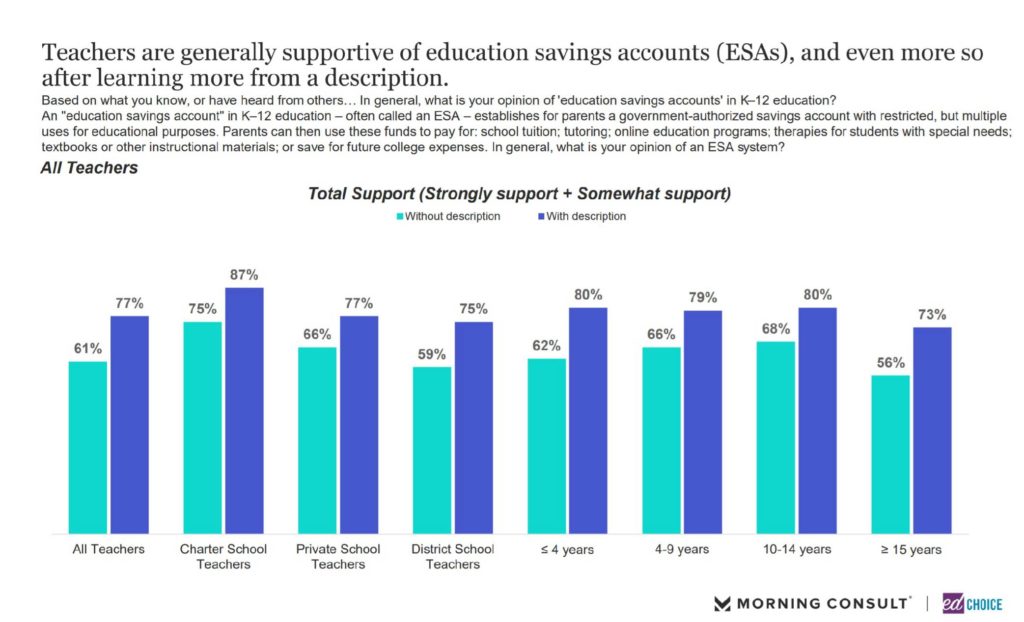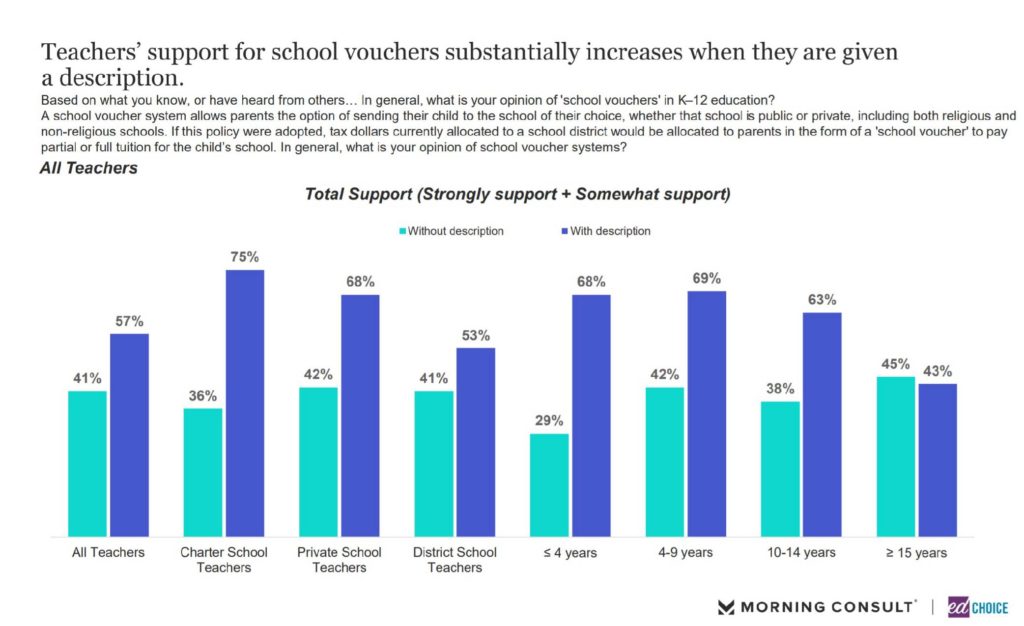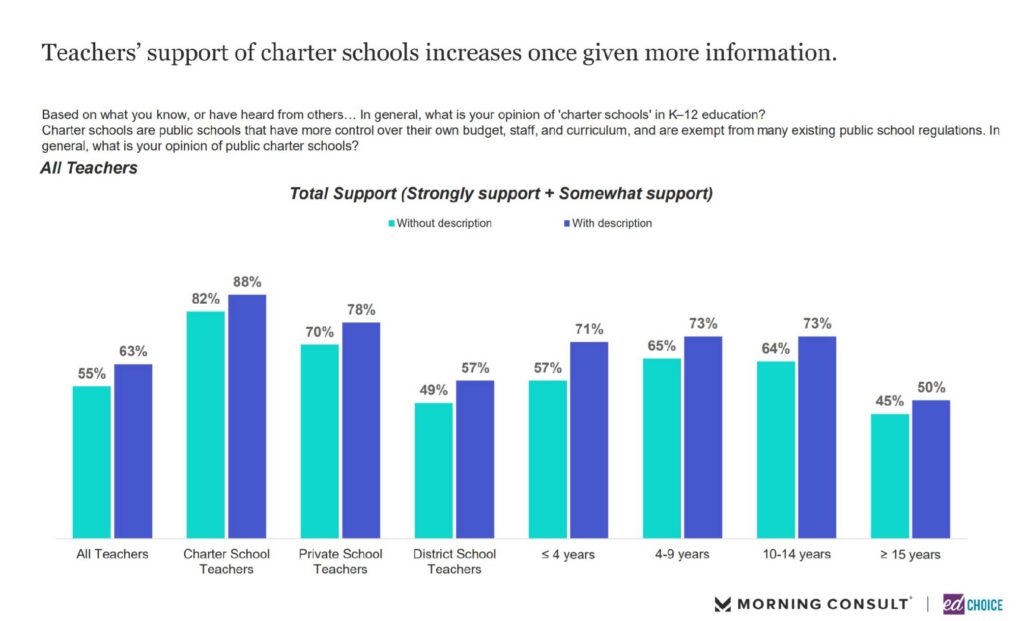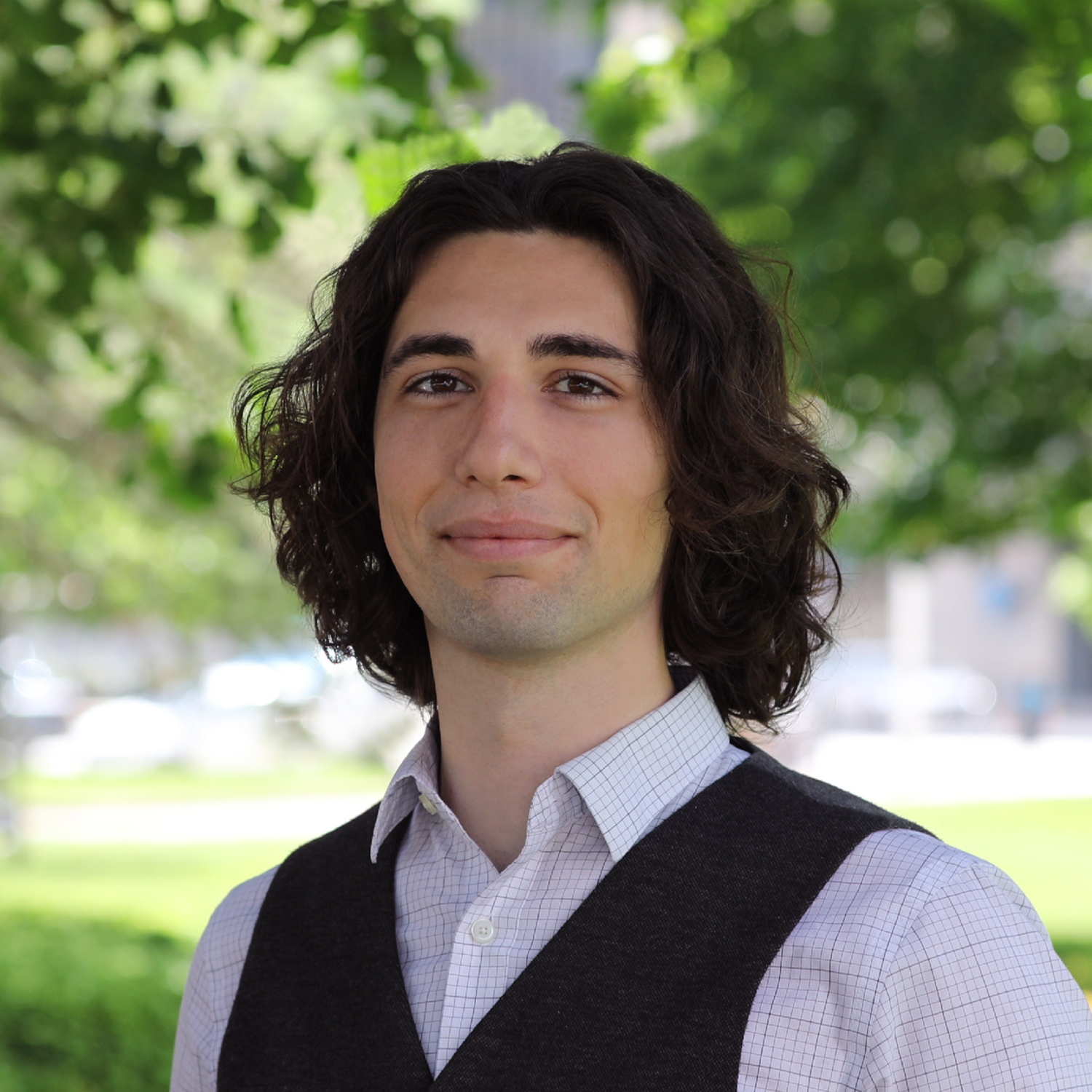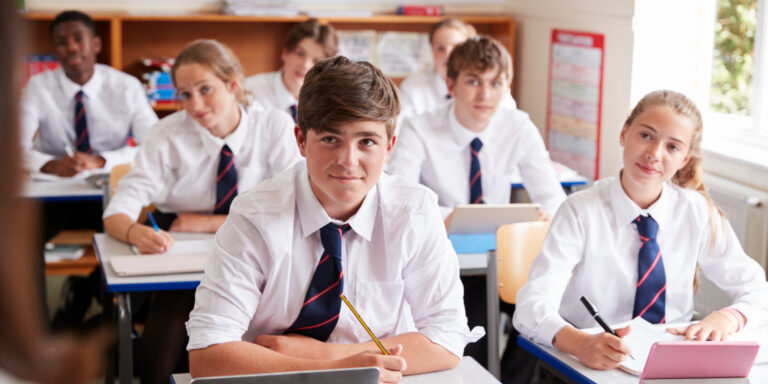Public Opinion Tracker: Teacher Survey Top Takeaways Q3 2021
Since the June wave of our quarterly survey of teachers, a new academic year began, some schools have had to handle more COVID-19 outbreaks, and much of the uncertainty from the last two school years has returned. As schools continue to make difficult decisions about classroom safety, remote learning, and curriculum development, the perspectives of the teachers leading the classrooms are especially important. For that reason, we survey about a thousand teachers each quarter in addition to our monthly polling of the general public and parents. From September 10-19, we surveyed exactly 1,000 K-12 teachers about COVID-19 policy, school choice, and other prescient matters in education.
In a nutshell: Teachers are warier about returning to school than they were in the summer, but generally remain positive about in-person education right now. They feel positively about their school, fellow teachers, and their local district, rating their COVID-19 responses and trustworthiness substantially higher than the general population. Learning current public school spending levels has a larger impact on teachers’ opinions about school spending than parents or the general population. Most teachers favor school choice policies, particularly education savings accounts (ESAs).
1. Teachers are more concerned about COVID-19 than they were in the summer. More than half of teachers said the pandemic has been very disruptive to their school, jumping nine percentage points from June. School was the only location teachers were noticeably more likely to say was more disrupted by COVID-19, with teachers just as likely to say their personal routines, household routines, and communities were very disrupted by the pandemic in September as they were in June.
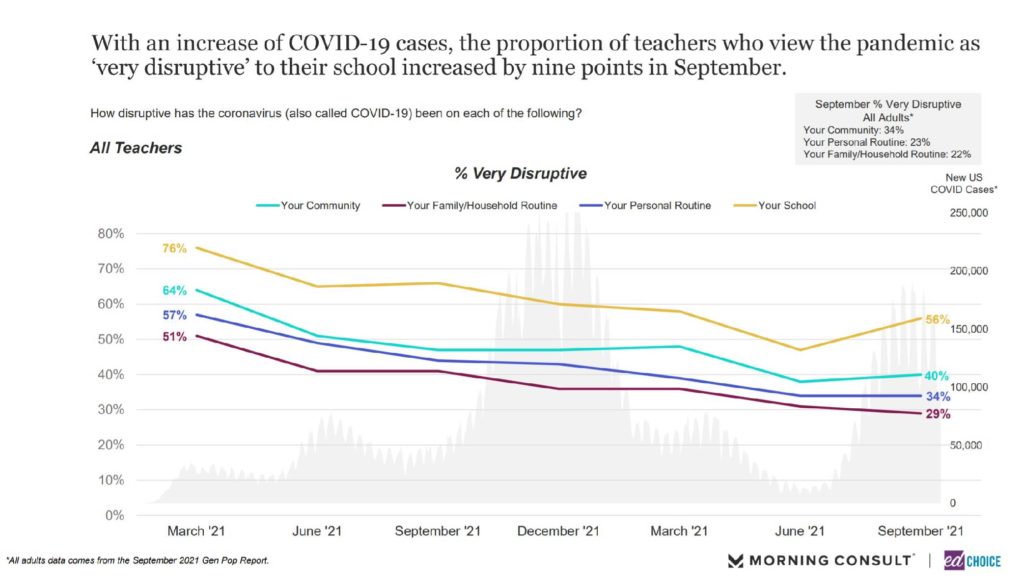
In addition to thinking their schools are being disrupted by COVID-19, teachers are increasingly uncomfortable about in-person schooling. Seventy percent of teachers said they were at least somewhat comfortable with classroom education right now, which is a 17-point decrease from June. That said, that share is seven percentage points higher than that of school parents September. Teachers with at least 15 years of experience are particularly likely to feel uncomfortable about in-person schooling this wave.
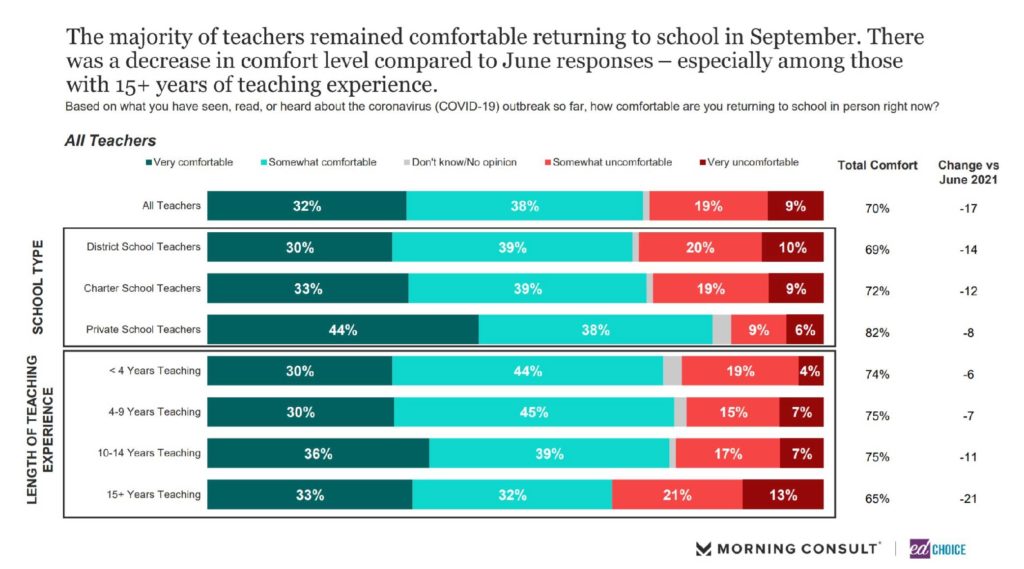
2. Teachers are more optimistic about schools than other adults. More than half of teachers believe K-12 education in their local school district is heading in the right direction, as has been the case since we began asking teachers this question in March of 2020. In September, 54 percent of teachers think K-12 education in their district is heading in the right direction, compared to 51 percent of school parents and 34 percent of the general population. Teachers are more pessimistic about the K-12 education on a state and national level than they are about their district, which is a pattern we also see among parents and the general population.
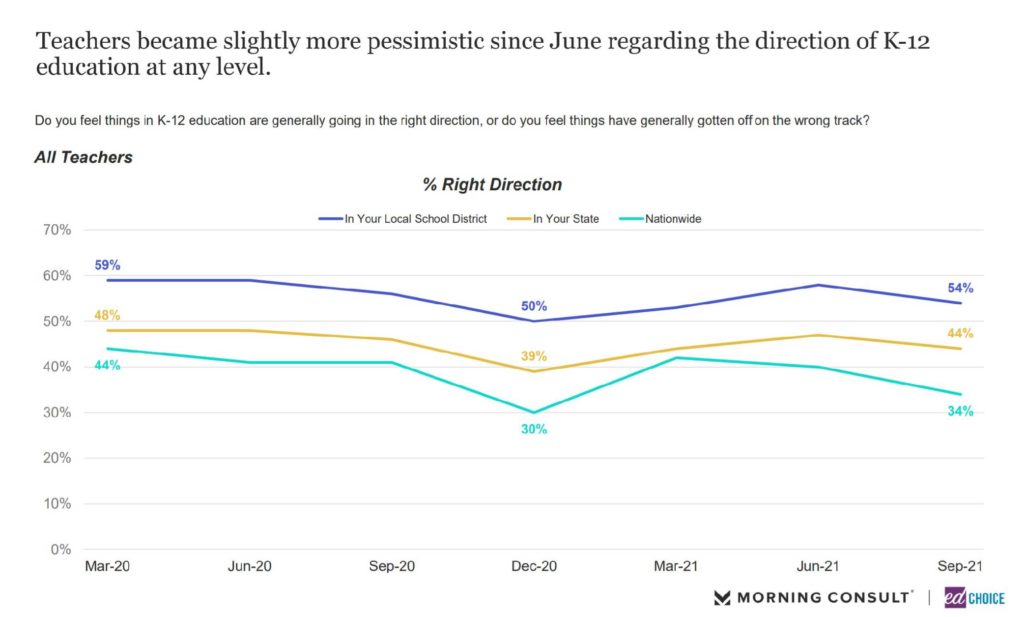
3. Teachers trust other teachers substantially more than teachers unions. Teachers are nearly twice as likely to strongly trust other teachers to make educational decisions than they are teachers unions, at 60 percent and 31 percent, respectively. Taking both soft and strong levels of trust into account, teachers are more likely to trust parents in educational decisions than unions. The highest levels of distrust are with the state legislature and/or Governor (47 percent), school boards (37 percent) and the State and U.S. Departments of Education (38 percent and 39 percent, respectively).
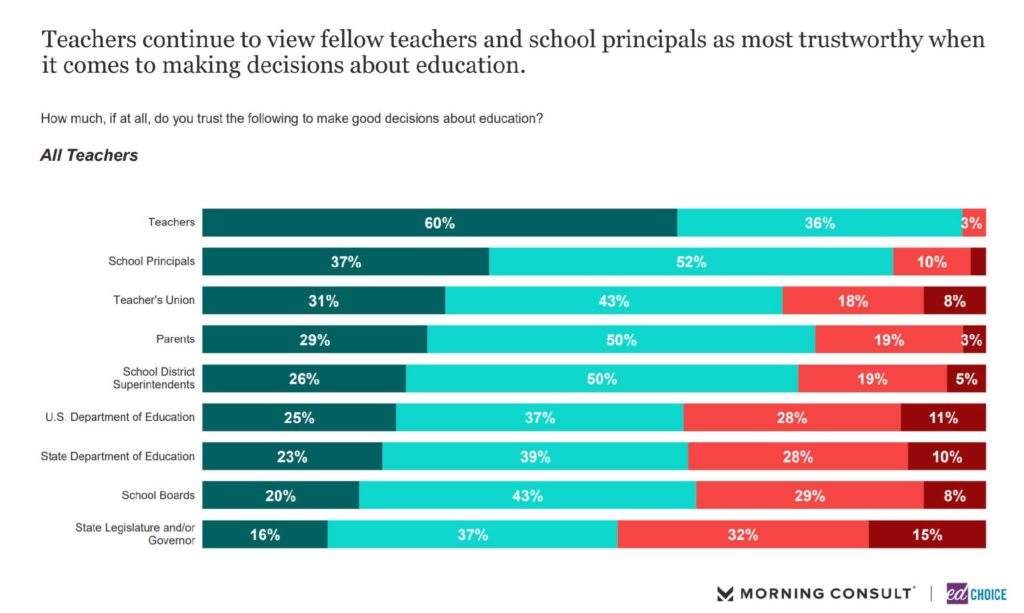
4. Teachers are much less likely to think school spending is too low when made aware of current spending levels. In our general population surveys, we typically find that the median adult thinks public schools spend $5,000 per student per year. In fact, public schools spend an average of over $12,000 per student per year, more than double the median estimate. Teachers underestimated public school spending even more strongly than the general population, with the median teacher estimating $3,000 per student per year and the median district teacher estimating $4,000.
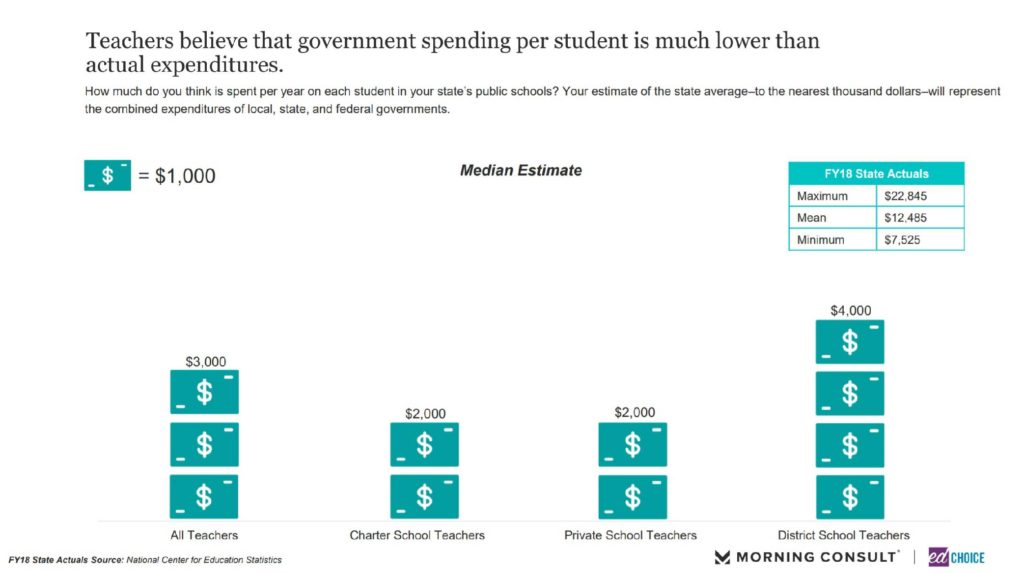
As with our monthly surveys of school parents and the general population, we posed a split-sample question to teachers. Each teacher received a question asking them whether they thought school spending was too low, too high, or about right. Some teachers were shown the actual average per-student amount public schools spend in their state; whether a teacher received this information was randomized. Teachers who learned how much money public schools spend were 20 percentage points less likely to say school spending currently is too low. This trend was especially strong for district school teachers, who were 24 points less likely to say spending is too low after seeing the actual statistic. In comparison, the general population is only 18 points less likely to say school spending should be higher after learning current spending levels.
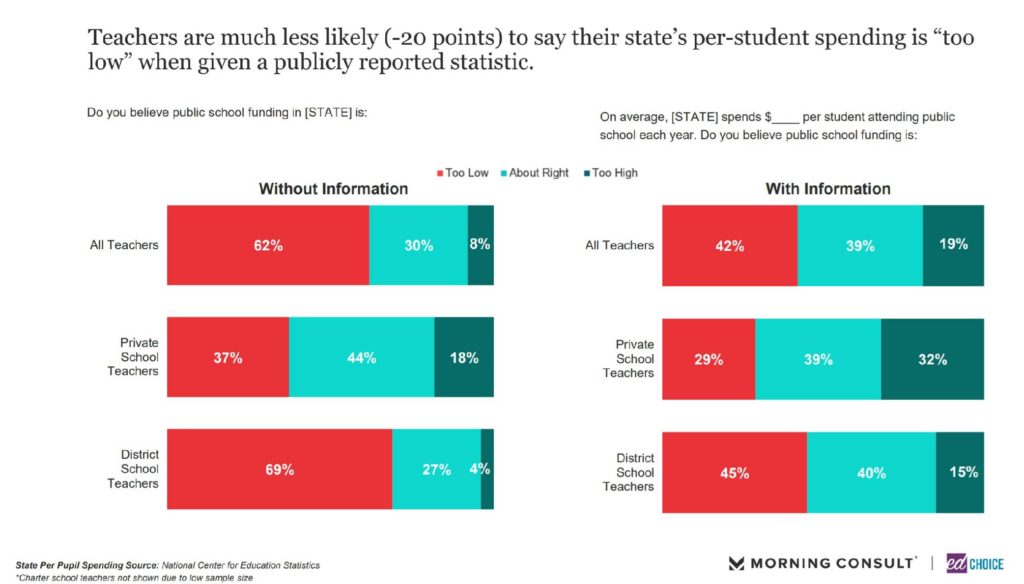
5. Most teachers say they would be interested in teaching through learning pods. Altogether, 57 percent of teachers say they would be at least somewhat interested in teaching at a learning pod, which we defined as a small group of children organized by parents who hire a private teacher or tutor to facilitate in-person instruction. Teachers working at private or charter schools were especially likely to be interested in working at a learning pod, at 72 percent respectively. District school teachers expressed less desire to teach at a learning pod, but a majority still said they were at least somewhat interested, at 53 percent. Most of the difference in total interest between district and private or charter school teachers is found in strong interest—private or charter school teachers were at least as likely to express strong interest as they were soft interest, but district school teachers were more than twice as likely to indicate soft interest as strong interest.
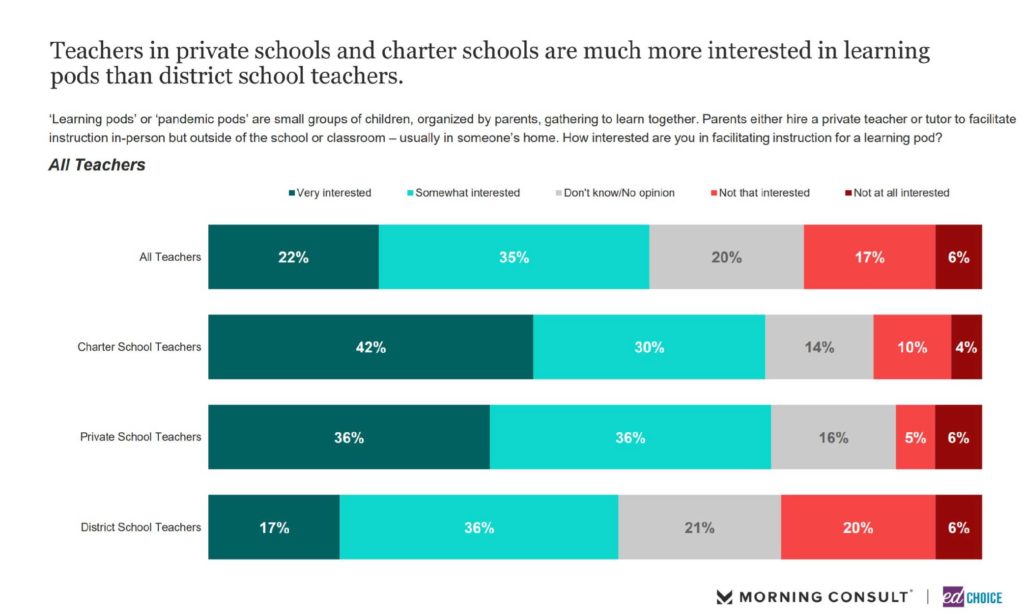
6. Teachers are more likely to think they would recommend the profession to others if they work in charter or private schools. We asked teachers how likely they would be to recommend teaching to friends or family on a scale of zero to ten. We grouped responses into “promotors” (strong supporters who gave a nine or ten), “passives” (less enthusiastic teachers who gave sevens or eights), and “detractors” (those rather unlikely to recommend the teaching profession and gave a number between zero and six).
Taking all teachers into account, teachers were ten points more likely to be a detractor than a promotor of the profession. Charter school and private school teachers, however, were substantially more enthusiastic, with 42 percent of each group giving “promotor” responses compared to just a quarter reporting “detractor” responses. District school teachers brought down the average for the rest of the sample. Their responses were essentially opposite of private and charter school teachers: about a quarter placed themselves in the “promotor” category and 43 percent in the “detractor” group.
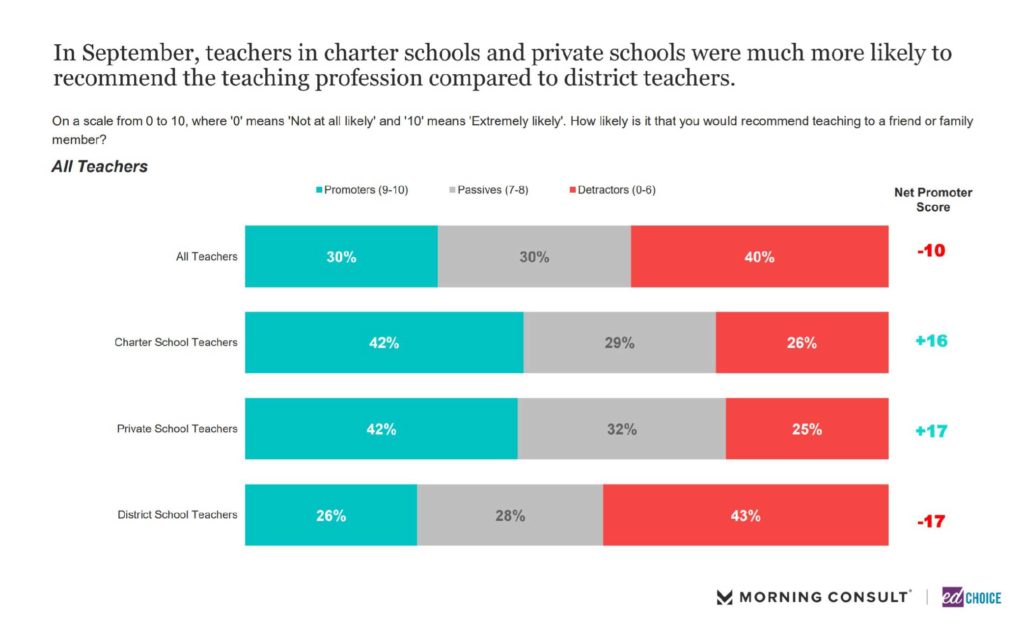
7. Many teachers considered leaving the profession over the summer, especially if they are 55 or older. Two-thirds of teachers ages 55 and over have at least somewhat considered leaving the field in the last three months, with 29 percent saying they considered leaving “a lot.” Teachers under the age of 55 were less likely to say they considered leaving the field recently, but just under half said they at least somewhat considered the change.
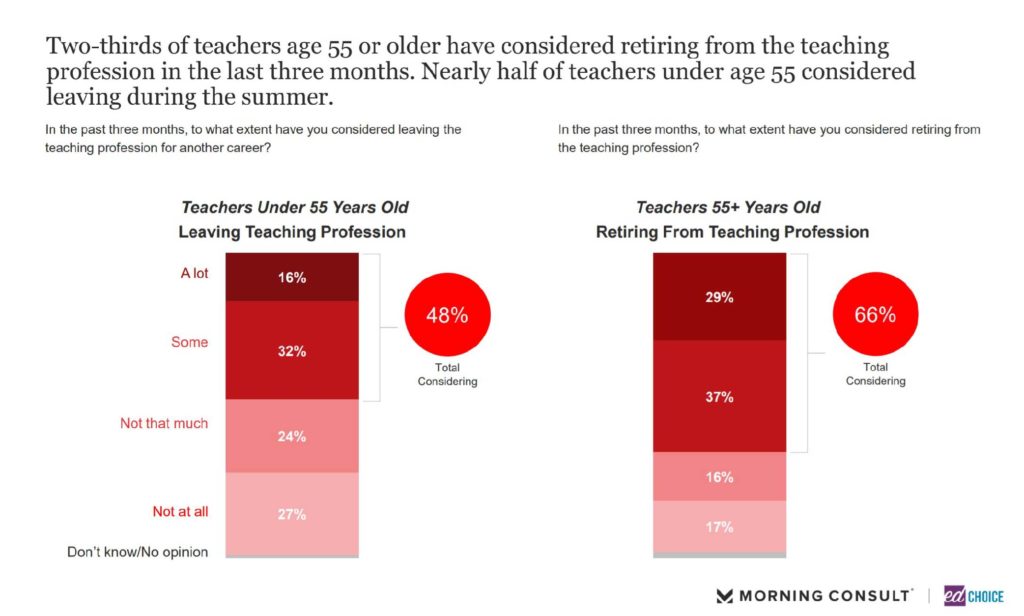
8. Majorities of teachers support three major school choice policies. Most teachers support education savings accounts (ESAs), private school vouchers, and charter schools, with 77 percent, 57 percent, and 63 percent somewhat or strongly supporting them. Teachers are especially likely to support these policies if they teach at a charter school or have less than 15 years of teaching experience.
